Airport Extreme (5th Gen) and Time Capsule (4th Gen) Review - Faster WiFi
by Brian Klug on August 5, 2011 10:22 PM EST- Posted in
- Mac
- Airport Extreme
- Time Capsule
- WiFi
Construction overall is like the Airport Extreme, however, heat up the back to soften the adhesive, pry off, remove some screws, and then the top metal lid lifts off gently. There’s a fan attached to the lid which is plugged into the mainboard, however. That requires some care to unplug gently to avoid damage.
Unlike the Airport Extreme, the Time Capsule has an internal power supply, and, of course, a 3.5” HDD for Time Machine backups. With the lid off, you can already see that the mainboard has a short SATA cable, and the power supply has a SATA power connector in addition to another for the mainboard. The power supply easily lifts out, revealing the board underneath.
I suspect that some users are interested in doing things like buying a 2TB Time Capsule ($299) and bringing along their own 3TB drive instead of paying $499 for the 3TB version. I can’t speak for the 3TB Time Capsule version, but inside the 2TB Time Capsule is a relatively consumer level WD Green WD20EARS SATA II 2TB, 64MB of cache HDD.
It’s lipped with rubber and rests inside a metal caddy on three pieces of foam. On the PCB side the four mounting holes are home to some screws which mate up with a rubber support on the Time Capsule’s base. If you’re looking carefully, you’ll note one more foam piece with a cable leading off—there’s a thermistor attached to the drive using some foam and a plastic bracket.
The temperature sensor is used in conjunction with the SoC to control the Time Capsule’s fan. I played around with the drive and a heat gun (not the two together) alongside a contact-less IR thermometer, and found that the fan seems to turn on and spin at a moderate level at just above 120 F (49 C) and stays active during normal use when the sensor is around 115 F (45 C). At below 110 F (43 C), the fan turns off. At around 140 F (60 C) the fan will spin at maximum and the front LED light will flash amber, and note overheating is happening in the Airport utility. 60 C is the maximum recommended operating temperature for the WD20EARS, so this makes sense.
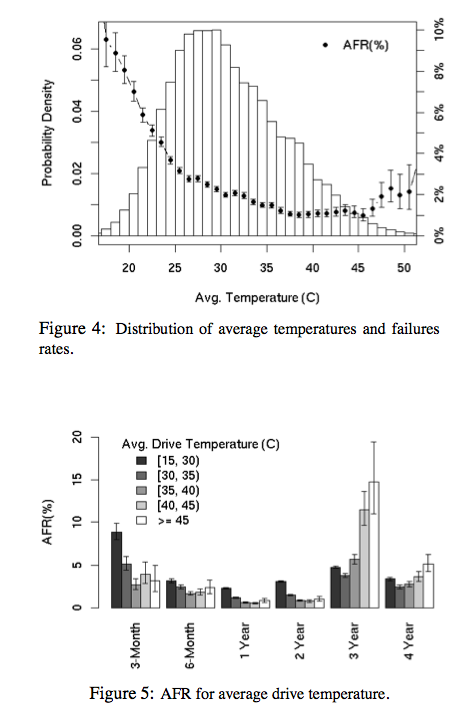
Google’s empirical study of disk failures has shown that between 40 and 45 C is ideal for prolonging drive life, so as long as things run in the fashion that I saw them run, it seems like drives shouldn’t fail due to excessive heat. That said, the airflow pattern in the Time Capsule seems odd—air is drawn in from the side, over and through the power supply, into the fan, then blown over half the drive, and hopefully exhausts through some small vents at the other side. Even with the fan spinning at maximum, it’s hard to really tell that any air is moving, and the only time you can even hear the fan is with it at maximum. The Time Capsule has a strong reputation for running warm, and I can definitely see why.
Upgrading the drive is simple enough. Transfer the four screws, rubber, foam, and the temperature sensor, and connect the SATA data and power cables. There’s also no need to preformat, as the airport utility has an auto formatting option as we’ll show later.
Disassembling the Time Capsule further shows some more interesting, if slightly expected details. On the reverse (top) side of the main PCB is the same Marvell SoC, switch, and flash module.
What’s different is that the Time Capsule gets double the RAM of the Airport Extreme—256MB of DDR2 instead of 128MB. Once again, we see the same dual BCM4331 based PCIe x1 WLAN card and four antenna connectors.
So there you have it, the main difference in both of Apple’s main WiFi AP products is the WLAN stack, which is a modern, more powerful BCM4331 based 3x3:3 solution. So, how has performance changed then?



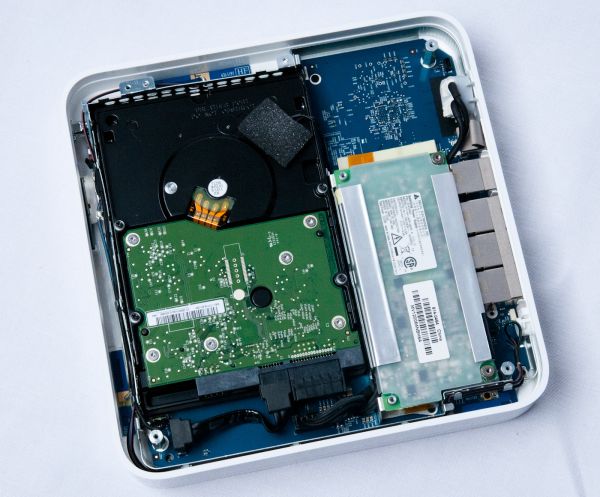
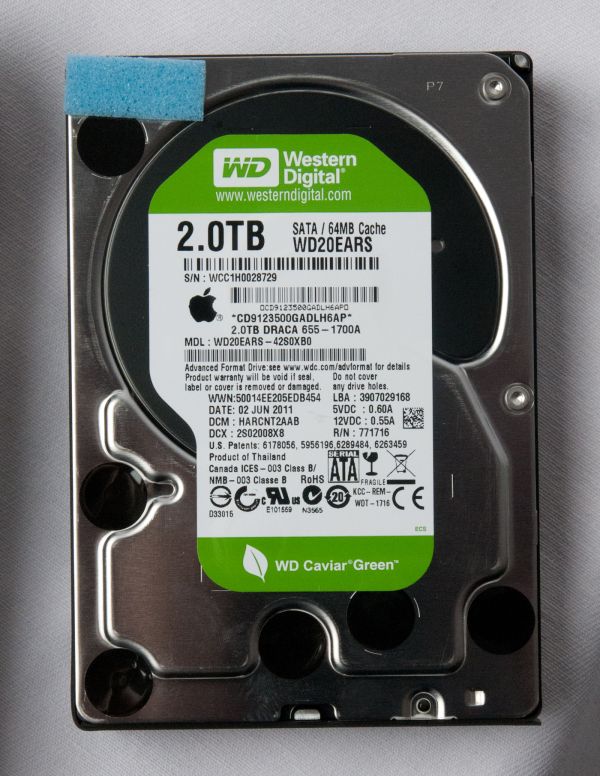
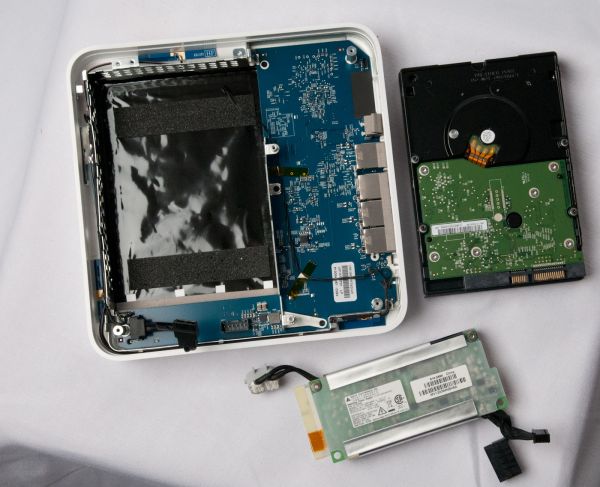

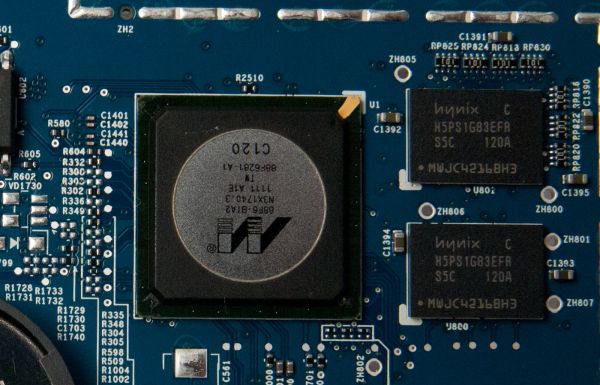














90 Comments
View All Comments
gman_wa - Tuesday, August 9, 2011 - link
I bought a 5th Extreme when they came out a couple weeks ago and returned it based on the Meraki Wi-Fi Stumber java-based browser app.Maybe its my house, but with the 2nd gen and the 5th gen side by side, the 2nd gen signal strength was consistently ~5-10db stronger than the 5th ten. My 2nd gen runs the 2.4Ghz b/g/n network in the house and I wanted to replace this with something stronger and add the guest networking.
I didn't actually try to compare throughput via wired or wireless.
Maybe I got a dud? Or would the single radio on the 2nd gen model outperform the dual radio models?
Thoughts?
applesandsynths - Wednesday, August 10, 2011 - link
Hey guys,I just had a quick question for anyone who may have a new 5th generation Airport Extreme. Can you tell me if the power rating numbers on the AC adapter are:
Input AC 100-200v 50-60Hz 0.5A Output: 12V 1.8A Model: A1202?
I know that these are the numbers from an older adapter but was just wondering if the new adapters are any different?
Thanks!
jackwong - Sunday, August 14, 2011 - link
I have the 4th and 5th.They are both 1A instead of 0.5A and the model is 20BB A.
Lebannen - Wednesday, August 10, 2011 - link
One thing I'm very interested in with regards to the Airport Extreme is noise. When connected to Airport Extremes (4th gen) over 5GHz, I can hear a reasonably loud noise when data transfer is occurring - elsewhere on the net I've heard it described as screeching and sizzling. I'm aware that it's all solid state so can only speculate that it's switching noise.It only occurs with 5GHz transfers, not with 2.4GHz, which *might* make it something to with the antenna configuration? If so, it may not have changed, but I'd be glad to hear either way - thanks :)
tichi - Thursday, August 11, 2011 - link
Just wondering if two other features (not mentioned in the article) are supported in the new version of Airport Extreme :1) Can you clone mac address for those of us not using DSL?
2) Can you still throttle the power output of the antenna?
Thanks
layman2 - Sunday, August 14, 2011 - link
It would be great if it had wireless internet i.e it gets internet over 3G or cDma networks and share it through wi-fi with other devicesDeath666Angel - Monday, August 15, 2011 - link
Hey guys!Really good article.
I was wondering if you will be testing other 450mbps routers, too? You mentioned The Linksys E4200. What about the TRENDnet TEW-692GR which costs 20-30€ less than the Apple and about 5€ less than the Linksys, but seems to support both 2.4GHz and 5GHz with 450mbps simultaneously.
Also, I have only found one WiFi adapter for 450mpbs for desktop PCs and that is a USB one called TRENDnet TEW-684UB. I have not found any PCI/PCIE cards that support 450mbps for the desktop. Is there any way to use mini-PCIE cards like the Intel 6300 in a desktop PC? Would it make sense to use a 450mbps access point as my WiFi card via ethernet?
I would like to upgrade my WiFi system in order to stream HD content from my future file server to my media PC in my living room. My wife would kill me if I laid any cables for ethernet, so WiFi is the only way in this situation. I somehow feel like the higher WiFi offers are still very experimental. It's difficult to find decent reviews who test the products not just write down the specs.
Matt Campbell - Tuesday, August 16, 2011 - link
Very nice, especially the FCC listings and teardown. The one thing I would have liked to see is how the internal drive speed compared to a NAS system like the My Book Live, Go Flex or other home NAS system, which would bypass the slow USB connection. I bought a 2 TB unit yesterday and am still reserving judgment vs. a router/NAS setup.Amia - Wednesday, August 17, 2011 - link
I saw this review and bought TC 2T but file transfer speed from TC to PC via GigE is no where near 80mbps,actually less than 40. Wonder how this test has been done (Amia - Wednesday, August 17, 2011 - link
Under 5g my Mac air is getting 270mbps but my another laptop which used to get 300mbps using my previous router can only have 150mbps. Maybe just like Mac air apple doesn't want you to use dual band (40mhz) under 2.4ghz